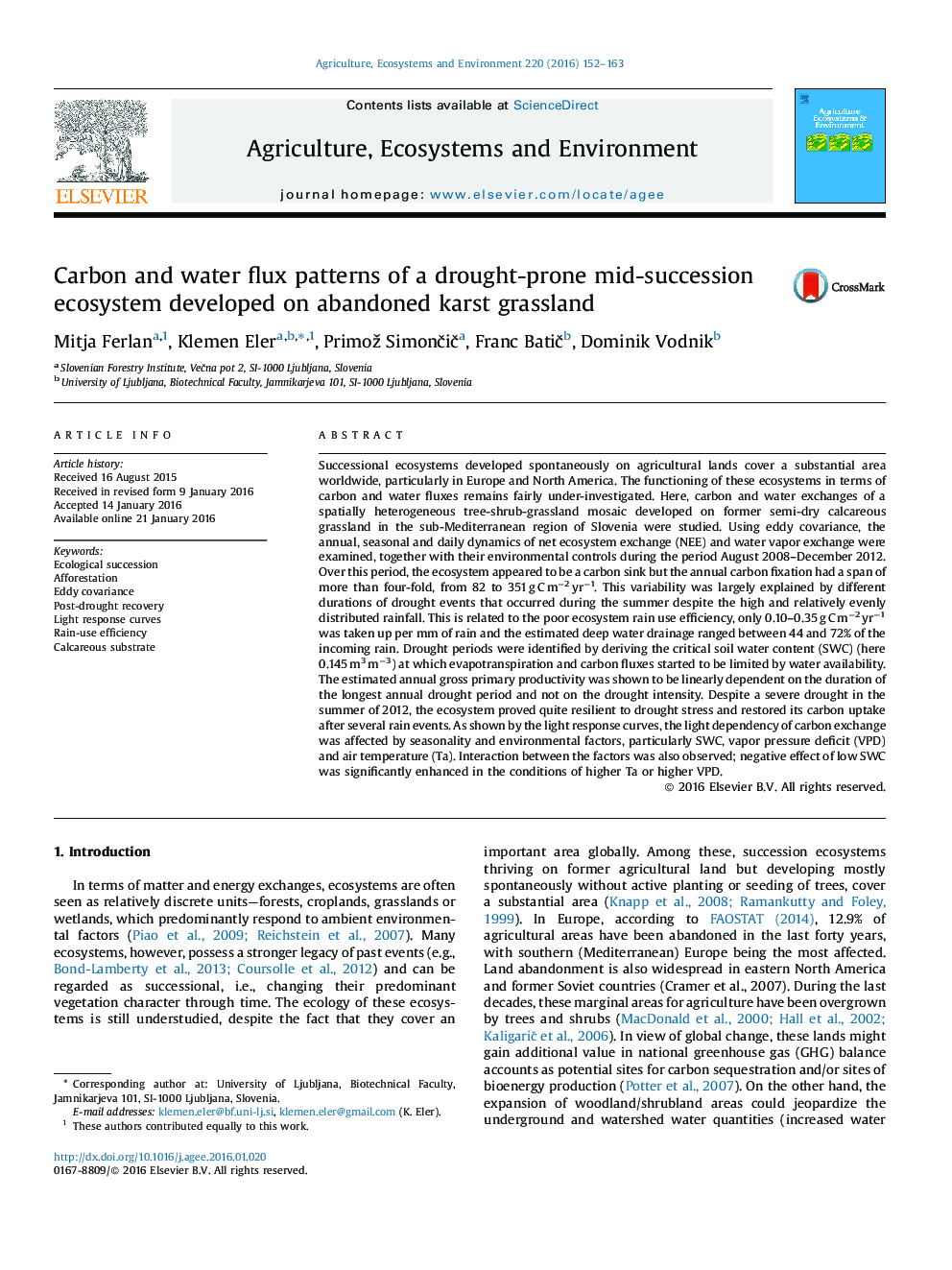| کد مقاله | کد نشریه | سال انتشار | مقاله انگلیسی | نسخه تمام متن |
|---|---|---|---|---|
| 8487495 | 1552032 | 2016 | 12 صفحه PDF | دانلود رایگان |
عنوان انگلیسی مقاله ISI
Carbon and water flux patterns of a drought-prone mid-succession ecosystem developed on abandoned karst grassland
ترجمه فارسی عنوان
الگوهای کربن و آب شوری یک اکوسیستم مرموزی که در اثر خشکسالی به وجود می آید بر روی مراتع رها شده کارست
دانلود مقاله + سفارش ترجمه
دانلود مقاله ISI انگلیسی
رایگان برای ایرانیان
کلمات کلیدی
موضوعات مرتبط
علوم زیستی و بیوفناوری
علوم کشاورزی و بیولوژیک
علوم زراعت و اصلاح نباتات
چکیده انگلیسی
Successional ecosystems developed spontaneously on agricultural lands cover a substantial area worldwide, particularly in Europe and North America. The functioning of these ecosystems in terms of carbon and water fluxes remains fairly under-investigated. Here, carbon and water exchanges of a spatially heterogeneous tree-shrub-grassland mosaic developed on former semi-dry calcareous grassland in the sub-Mediterranean region of Slovenia were studied. Using eddy covariance, the annual, seasonal and daily dynamics of net ecosystem exchange (NEE) and water vapor exchange were examined, together with their environmental controls during the period August 2008-December 2012. Over this period, the ecosystem appeared to be a carbon sink but the annual carbon fixation had a span of more than four-fold, from 82 to 351 g C mâ2 yrâ1. This variability was largely explained by different durations of drought events that occurred during the summer despite the high and relatively evenly distributed rainfall. This is related to the poor ecosystem rain use efficiency, only 0.10-0.35 g C mâ2 yrâ1 was taken up per mm of rain and the estimated deep water drainage ranged between 44 and 72% of the incoming rain. Drought periods were identified by deriving the critical soil water content (SWC) (here 0.145 m3 mâ3) at which evapotranspiration and carbon fluxes started to be limited by water availability. The estimated annual gross primary productivity was shown to be linearly dependent on the duration of the longest annual drought period and not on the drought intensity. Despite a severe drought in the summer of 2012, the ecosystem proved quite resilient to drought stress and restored its carbon uptake after several rain events. As shown by the light response curves, the light dependency of carbon exchange was affected by seasonality and environmental factors, particularly SWC, vapor pressure deficit (VPD) and air temperature (Ta). Interaction between the factors was also observed; negative effect of low SWC was significantly enhanced in the conditions of higher Ta or higher VPD.
ناشر
Database: Elsevier - ScienceDirect (ساینس دایرکت)
Journal: Agriculture, Ecosystems & Environment - Volume 220, 15 March 2016, Pages 152-163
Journal: Agriculture, Ecosystems & Environment - Volume 220, 15 March 2016, Pages 152-163
نویسندگان
Mitja Ferlan, Klemen Eler, Primož SimonÄiÄ, Franc BatiÄ, Dominik Vodnik,
